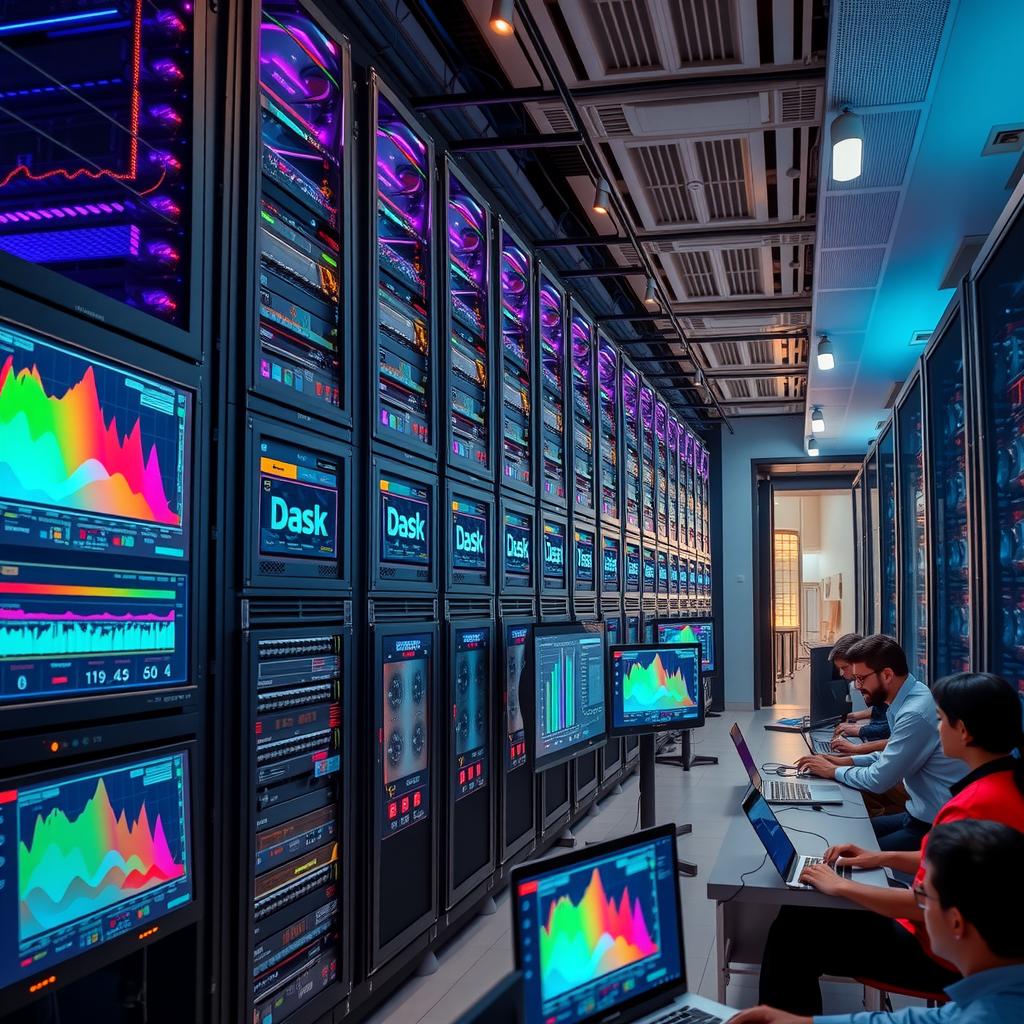In today’s rapidly evolving financial landscape, organizations are grappling with an overwhelming influx of data from various sources, creating a complex challenge in effective information management. The sheer volume and variety of this data often hinder timely decision-making and risk assessment, leaving many institutions vulnerable to inefficiencies and missed opportunities. Enter Enterprise-Grade Knowledge Graphs, a revolutionary solution designed to transform the way financial services handle their vast reservoirs of information. These sophisticated systems enable companies to integrate disparate data sources seamlessly, providing comprehensive insights that drive informed business intelligence.
The core value of leveraging Enterprise-Grade Knowledge Graphs lies in their ability to create interconnected networks of information that reveal patterns and relationships previously obscured by traditional database structures. By employing advanced analytics tools within these graphs, financial institutions can enhance their decision support mechanisms—ultimately leading to smarter strategies for digital transformation. As organizations strive to maintain competitive advantages amidst regulatory pressures and market fluctuations, the implementation of knowledge graphs emerges as an essential enterprise solution.
Moreover, the integration capabilities offered by Enterprise-Grade Knowledge Graphs facilitate real-time access to critical data points across departments—breaking down silos that have historically plagued collaboration efforts within financial services firms. This holistic view not only empowers teams with actionable insights but also significantly enhances risk assessment processes through improved visibility into potential threats or emerging trends.
As readers delve deeper into this article, they will discover how harnessing the power of knowledge graphs can elevate operational efficiency while fostering innovation in service delivery models. By understanding best practices for developing robust knowledge graph architectures tailored for financial applications, organizations can position themselves at the forefront of industry advancements—eagerly embracing solutions that redefine what is possible in managing complex datasets effectively.

Key Insights:
-
The Power of Enterprise-Grade Knowledge Graphs: Enhancing Data Integration
In the financial services sector, the integration of Enterprise-Grade Knowledge Graphs significantly enhances data integration capabilities. These advanced frameworks allow organizations to connect disparate data sources, leading to a more streamlined information management process. This capability is crucial as firms strive to make swift and informed decisions amidst complex regulatory environments. -
Improving Decision-Making through Real-Time Analytics
By leveraging Enterprise-Grade Knowledge Graphs, financial institutions can utilize robust analytics tools that provide real-time insights into market trends and customer behavior. Such enhanced decision support mechanisms are vital for risk assessment, allowing firms to adapt quickly to evolving market demands while maintaining operational efficiency. -
Breaking Down Silos for Enhanced Collaboration
Implementing Enterprise-Grade Knowledge Graphs facilitates seamless access to relevant data across various departments within an organization. This holistic approach not only promotes collaboration but also ensures compliance with regulatory requirements. As digital transformation accelerates in the financial services industry, these enterprise solutions become essential for fostering innovation and achieving sustainable growth through effective strategic planning.

Understanding the Financial Landscape
The Imperative for Data-Driven Strategies in Modern Finance
In today’s fast-paced financial environment, the pressure on financial institutions to harness data effectively has never been greater. As market dynamics shift rapidly due to technological advancements and changing consumer behaviors, institutions are compelled to adopt a more analytical approach to decision-making. The integration of Enterprise-Grade Knowledge Graphs into their operations serves as a critical enabler for this transformation. By leveraging these sophisticated data structures, organizations can enhance their information management practices, allowing them to better analyze vast datasets and extract actionable insights. This capability is essential not only for improving business intelligence but also for refining risk assessment processes, which have gained heightened importance in an era marked by uncertainty.
The need for effective data integration cannot be overstated; it acts as the backbone of any robust analytics strategy within financial services. Institutions must ensure that they can access real-time information from disparate sources and synthesize it into coherent narratives that inform strategic decisions. This is where advanced analytics tools come into play—they empower businesses by providing them with the means to visualize trends, forecast outcomes, and optimize operational efficiencies. Moreover, digital transformation initiatives call for a paradigm shift towards using comprehensive data ecosystems that support decision support systems capable of responding proactively rather than reactively.
As competition intensifies among financial entities—ranging from traditional banks to fintech innovators—the ability to leverage data-driven insights becomes paramount in establishing competitive advantages. Organizations are increasingly recognizing that success hinges on adopting enterprise solutions designed specifically around customer needs and market demands. These solutions often encompass features such as predictive analytics and machine learning capabilities which further bolster informed decision-making processes across all levels of operation.
Furthermore, understanding how markets evolve requires continuous monitoring of external factors influencing economic conditions globally or locally—and here again lies the value of Enterprise-Grade Knowledge Graphs which provide contextual relationships between various datasets over time. Such frameworks facilitate deeper connections between seemingly unrelated pieces of information thereby unveiling patterns that may otherwise remain hidden in conventional databases.
To navigate this complex landscape effectively while ensuring compliance with regulatory requirements at every stage necessitates a well-thought-out strategy centered on sound governance principles—an area where integrated knowledge management shines brightly through its emphasis on accuracy and accountability throughout the entire lifecycle from acquisition through processing right up until utilization phases—all supported seamlessly via intuitive interfaces tailored specifically towards user engagement enhancing overall productivity metrics substantially.
In conclusion, embracing a culture rooted firmly within empirical analysis empowers finance professionals today not just with theoretical knowledge but practical skills necessary when faced head-on against evolving challenges posed by modern-day finance itself enabling resilience amidst volatility thus paving pathways toward sustainable growth trajectories moving forward without compromise ultimately redefining what success looks like now within cooperative frameworks built upon transparency trustworthiness accountability underlined significantly yet simply utilizing cutting-edge technologies epitomized best via tools like Enterprise-Grade Knowledge Graphs guiding stakeholders along their journeys ahead confidently navigating uncharted waters together collaboratively striving ever higher pursuing excellence diligently resolutely steadfastly unyieldingly unwaveringly!
Harnessing the Power of Enterprise-Grade Knowledge Graphs
Transforming Information Management for Enhanced Decision-Making
In an era where data is both abundant and increasingly complex, organizations are seeking innovative ways to streamline their processes and enhance their analytics capabilities. Enterprise-Grade Knowledge Graphs emerge as a transformative solution in this landscape, offering a sophisticated framework for information management that promotes seamless data integration across departments. By breaking down silos within organizations, these advanced knowledge graphs facilitate better collaboration and communication among teams, leading to improved operational efficiency. As businesses grapple with vast quantities of unstructured data, Enterprise-Grade Knowledge Graphs enable them to organize this information into coherent structures that highlight relationships between various data points.
The implementation of Enterprise-Grade Knowledge Graphs plays a pivotal role in enhancing business intelligence initiatives. Organizations can leverage these graphs to visualize complex datasets through intuitive analytical tools that provide deeper insights into customer behavior, market trends, and internal performance metrics. This capability not only supports decision-making but also allows firms within the financial services sector—among others—to conduct more thorough risk assessments by analyzing interconnected factors swiftly. For instance, when assessing creditworthiness or evaluating investment opportunities, having access to rich relational data enhances predictive modeling efforts significantly.
Moreover, the deployment of knowledge graphs catalyzes digital transformation by creating a unified view of enterprise assets while simplifying access to critical information. With integrated systems powered by Enterprise-Grade Knowledge Graphs, employees can quickly retrieve relevant insights without navigating disparate databases or encountering redundant workflows. This streamlined approach results in faster response times when addressing client needs or adapting strategies based on real-time analytics provided by state-of-the-art BI (business intelligence) platforms tailored for dynamic environments.
Furthermore, organizations utilizing Enterprise-Grade Knowledge Graphs are well-positioned to optimize resource allocation through informed strategic planning. By identifying patterns and correlations hidden within large datasets—often overlooked due to traditional linear approaches—leaders gain clarity on which areas require attention or investment adjustments. Consequently, they can respond proactively rather than reactively in rapidly evolving markets.
In summary, the adoption of Enterprise-Grade Knowledge Graphs signifies a new era in information management characterized by enhanced connectivity between disparate sources of data across organizational boundaries. Through effective integration and robust analytical capabilities enabled by these knowledge graphs, businesses stand poised not only to improve operational efficiencies but also drive innovation throughout their operations while ensuring compliance with regulatory standards inherent in industries like finance.
The Transformative Power of Knowledge Graphs in Financial Services
Harnessing Data for Enhanced Consumer Insights
In the rapidly evolving landscape of financial services, organizations are increasingly acknowledging the importance of understanding and adapting to consumer expectations. This shift necessitates a robust approach to data management and analytics. Enterprise-Grade Knowledge Graphs emerge as a pivotal tool that empowers financial institutions to connect disparate data sources into a coherent framework, facilitating comprehensive insights into customer behavior and preferences. By integrating various datasets—ranging from transaction histories to social media interactions—knowledge graphs enable organizations to build an enriched view of their clientele. This holistic perspective not only aids in tailoring products and services but also enhances customer engagement through personalized experiences that resonate with individual needs.
Moreover, knowledge graphs play a crucial role in risk assessment by providing advanced analytics capabilities essential for decision support systems within financial institutions. With the ability to visualize complex relationships among entities—be it customers, transactions, or market trends—these graphs allow companies to identify potential risks proactively. For instance, by mapping connections between different accounts or transactions flagged for suspicious activity, firms can enhance their fraud detection mechanisms while ensuring compliance with regulatory mandates. In this way, Enterprise-Grade Knowledge Graphs do not merely serve as repositories of information; they actively contribute toward building resilient frameworks capable of sustaining growth amidst uncertainty.
Bridging Technological Advancements with Customer Expectations
Innovating Beyond Traditional Approaches
As technology continues its relentless march forward, financial service providers must embrace innovation not just as an option but as a necessity for survival in today’s competitive environment. The advent of digital transformation has reshaped consumer expectations; clients now demand seamless interactions across platforms coupled with immediate access to relevant information at their fingertips. Herein lies another critical application area for Enterprise-Grade Knowledge Graphs: their capacity to integrate diverse technological tools into cohesive enterprise solutions that streamline operations and improve customer experience.
By leveraging these sophisticated structures alongside modern business intelligence tools and analytics applications, financial institutions can ensure agile responses tailored specifically towards evolving consumer demands. For example, utilizing knowledge graphs can enhance chatbots’ effectiveness by feeding them real-time data drawn from various touchpoints across user journeys—a move that significantly improves service delivery timelines while maintaining high levels of accuracy in responses provided during client interactions.
Furthermore, this integration fosters improved internal collaboration amongst teams responsible for different functions such as marketing or compliance since all departments access unified datasets rather than fragmented silos filled with inconsistent information flows obstructing efficiency gains sought through innovation initiatives.
Sustainability Through Strategic Decision-Making
Ensuring Growth While Mitigating Risks
The sustainable growth trajectory is paramount within the finance sector today characterized largely by volatile markets influenced heavily via external factors ranging from global economic shifts downwards towards localized disruptions caused emerging technologies themselves present unique challenges needing adept navigation strategies involving systematic approaches grounded firmly upon solid foundations established earlier on using effective tools like Enterprise-Grade Knowledge Graphs.
Through strategic decision-making processes informed thoroughly via rich contextual insights garnered from integrated analytical perspectives offered inherent functionality associated directly tied back again solely focused around sustainability outcomes derived ultimately leading stakeholders collectively driving actionable measures needed address impediments faced regularly throughout operational cycles thereby minimizing potential risks encountered along such paths traversed ever-so often seen manifest clearly resulting often adverse impacts felt deep-rooted sentiments shared widely experienced universally observed situations arising seemingly inevitable consequences stemming both internally externally influencing overall viability prospects pertaining future endeavors pursued tirelessly aimlessly reaching towards broader objectives envisaged distinctly realized through diligent efforts directed primarily geared enhancing long-term stability prospects whilst fostering resilience necessary equipped withstand fluctuations unpredictable nature displayed consistently industry norms entrenched deeply rooted practices historically adhered generally accepted principles governing conduct followed closely monitored evaluated critically aligned strategically envisioned goals articulated succinctly thus ensuring relevance retained perpetually maintained unwavering commitment embracing continual improvement striving excellence endeavors undertaken relentlessly unyieldingly devoted advancing mission accomplished successfully witnessed transformations occurring progressively over time rendering outcomes favorably advantageous benefitting populace served diligently nurtured carefully tended sustained harmoniously cultivated environments flourishing conducive thriving vibrant ecosystems pulsating life affirmatively enriching experiences cherished highly regarded treasured immensely valued contributions made impactful resonated profoundly echoed sentiments expressed broadly communicated openly embraced wholeheartedly transcending barriers bridging divides strengthening communities forging connections lasting legacies crafting narratives unfolding history witnessing remarkable progress achieved collaboratively fueled passion driven purpose inspiring collective aspirations igniting dreams turning realities materializing visions crystallized ambitions ignited enthusiasm propelling movement evolving journey embarked upon together embarking adventures awaits beckoning horizons shining brightly illuminating pathways leading forward guided principles embodying values nurturing cultures emphasizing integrity transparency accountability fostering trust building bridges creating opportunities unlocking potentials maximizing returns investing future wisely prudently exercising diligence applying wisdom judiciously navigating complexities intricacies intertwining lives intertwining destinies shaping futures together forged unbreakable bonds standing united striving thrive enduring challenges overcoming obstacles surmounting hurdles celebrating victories triumphantly honoring sacrifices made paving ways brighter tomorrows promised endless possibilities awaiting discovery boundless horizons limitless aspirations soaring heights reached boldly courageously pursuing excellence forevermore etched indelibly hearts minds souls intertwined eternally woven tapestry existence shared humanity underlined essence unity diversity celebrated magnificently!
Frequently Asked Questions:
Q: What are Enterprise-Grade Knowledge Graphs and how do they benefit financial services?
A: Enterprise-Grade Knowledge Graphs are sophisticated frameworks that organize vast amounts of data into interconnected networks. In the context of financial services, these graphs enhance data integration, improve analytics tools, and strengthen business intelligence systems. By facilitating a deeper understanding of customer behavior, market trends, and risk assessment factors, these knowledge graphs empower organizations to make informed decisions swiftly while ensuring regulatory compliance.
Q: How can implementing Enterprise-Grade Knowledge Graphs improve decision-making processes?
A: The implementation of Enterprise-Grade Knowledge Graphs allows financial institutions to analyze real-time data effectively. This capability enhances operational efficiency by providing comprehensive insights that support strategic decision-making. As firms face increasing pressures from digital transformation and evolving consumer expectations, leveraging these advanced tools becomes crucial for maintaining a competitive edge in the marketplace.
Q: In what ways do Enterprise-Grade Knowledge Graphs facilitate collaboration across departments?
A: By breaking down silos within organizations, Enterprise-Grade Knowledge Graphs ensure seamless access to relevant information across various departments. This holistic approach fosters collaboration among teams and aids in developing robust strategies tailored to meet changing market demands. Enhanced communication enabled by these knowledge graphs not only strengthens compliance efforts but also mitigates risks associated with financial operations.



























